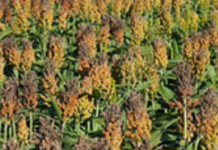Parents should model food behaviors for their children, says K-State’s Blakeslee
MANHATTAN, Kan. – Got lunch?
Back to school time means a new challenge for parents to prepare healthy and safe lunches that their children will eat. Kansas State University food scientist Karen Blakeslee shares a few tips to pack good health and safety into kids lunch boxes:
• Teach your child about nutrition by having them help you shop. “Encourage them to try a new food each week,” Blakeslee said. “And have them help you put the lunch together.”
• Plan a weekly lunch menu to help make shopping easy. Children are more likely to eat foods that they choose or prepare.
• Use the rainbow approach in choosing foods. “Make it colorful,” Blakeslee said. “If everything is all one color, it really makes a boring lunch.”
• Use ice packs or frozen juice boxes to help keep cold foods cold. If the school has a refrigerator, ask about using it to store cold foods. “Try to choose foods that don’t require temperature control to make it easy,” Blakeslee said.
• If a hot food is packed, use an insulated container to keep that food hot.
• Include nutrient-dense foods; limit sugar, fat and sodium foods. “The more nutritious the food, the better the child functions in the classroom during the day,” Blakeslee said.
• Always remember to wash your hands before preparing any meal, including school lunch.
Blakeslee is coordinator of K-State’s Rapid Response Center for food science where she routinely encourages food safety and healthy practices.
As parents, she said, “be a role model for children to show them what foods are better for a healthy diet. Show them you enjoy eating a variety of foods to get them interested.”
That may include having some fun with the foods given to kids.
“Get out the cookie cutters and cut foods into fun shapes,” Blakeslee said. “These can be used to cut cheese or vegetables into a variety of shapes. Have the children make their own foods fun. Add fun notes to the lunch to give them a smile or a laugh and to help encourage them to eat their lunch.”
Where safety is concerned, parents should always wash hands before preparing children’s lunch. “Plan ahead and store the lunch in the refrigerator to quickly put in an insulated lunch to grab and go,” Blakeslee said.
“Add a disposable hand wipe to help them clean their hands, if soap and water are not available” during their lunch time, she said.
Blakeslee also suggested that parents remind children not to share lunches. “If a friend has a food allergy, it could be dangerous to them,” she said. “Talk to teachers and other staff about specific concerns regarding bringing lunches to school, such as food allergies.”
Blakeslee publishes a monthly newsletter called You Asked It! that provides numerous tips on being safe and healthy. More information is also available from local extension offices in Kansas.
-30-
FOR PRINT PUBLICATIONS: Links used in this story
Rapid Response Center for food science, https://www.rrc.k-state.edu
You Asked It! monthly newsletter, https://www.rrc.k-state.edu/newsletter
K-State Research and Extension statewide offices, https://www.ksre.k-state.edu/about/statewide-locations.html
K State Research and Extension is a short name for the Kansas State University Agricultural Experiment Station and Cooperative Extension Service, a program designed to generate and distribute useful knowledge for the well being of Kansans. Supported by county, state, federal and private funds, the program has county extension offices, experiment fields, area extension offices and regional research centers statewide. Its headquarters is on the K State campus in Manhattan. For more information, visit www.ksre.ksu.edu. K-State Research and Extension is an equal opportunity provider and employer.
Story by:
Pat Melgares
785-532-1160
[email protected]
For more information:
Karen Blakeslee
785-532-1673
[email protected]





